It’s a season for families to come together and celebrate the holiday spirit. And when everyone from the grandparents on down to little grandchildren are together under one roof, that means it’s time for another big feast!
CT Grown products are a great choice for the family gathering. You’ll also need something to wet your whistle, though, and Connecticut’s farmers have you covered there as well! Check out these options, and raise a glass to CT Grown for the holiday season!
Eggnog
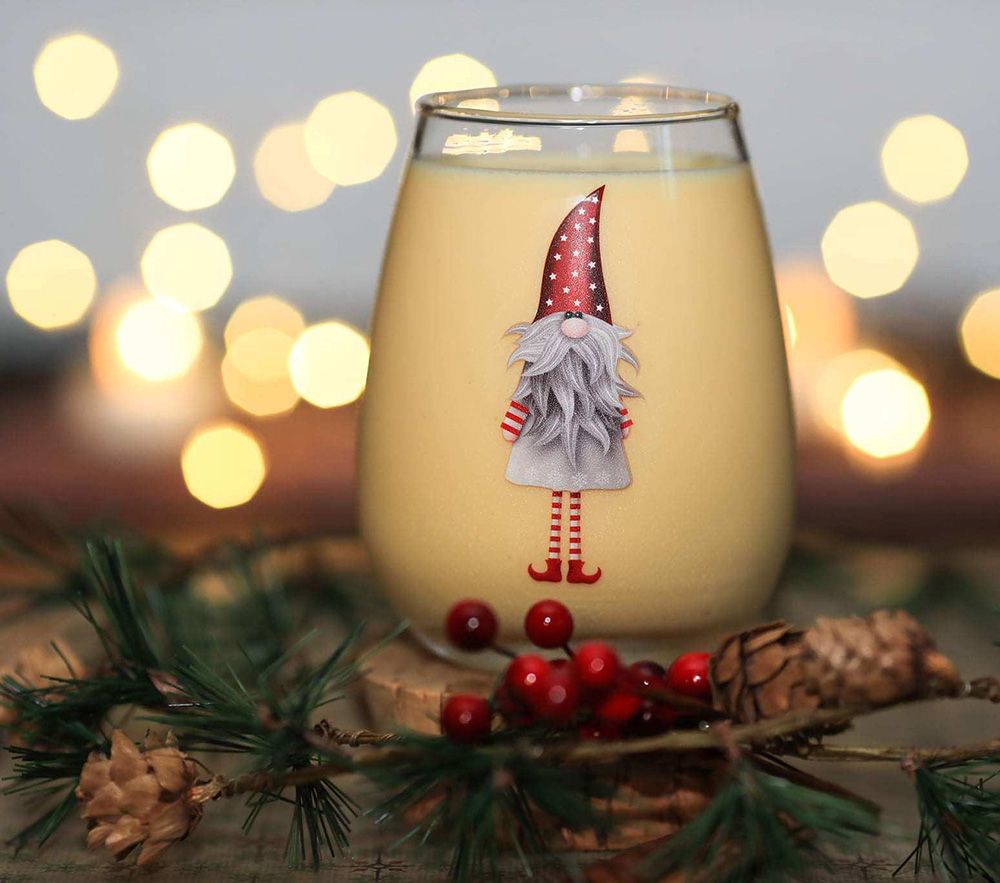
Like many traditional holiday dishes or beverages, eggnog was once considered a luxury due to the priciness of many of its ingredients. Families would splurge on the drink — and other delicious items — and hold toasts to wealth and prosperity in the new year.
Although eggnog is no longer considered a luxury, these toasts have remained — along with the seasonal availability of the beverage, which could conceivably be offered year-round. Eggnog is a thick, sweet drink that mixes milk, cream, sugar, egg yolks, and whipped egg whites.
Several Connecticut dairy farms get in on the holiday spirit by producing eggnog at this time of year. You can enjoy it plain, or spike it with alcohol like rum or bourbon.
This is also the only time of year you can test it out in other ways! Try eggnog as a coffee creamer, or use it as a milk substitute in recipes for waffles, pancakes, and cookies.
Coquito
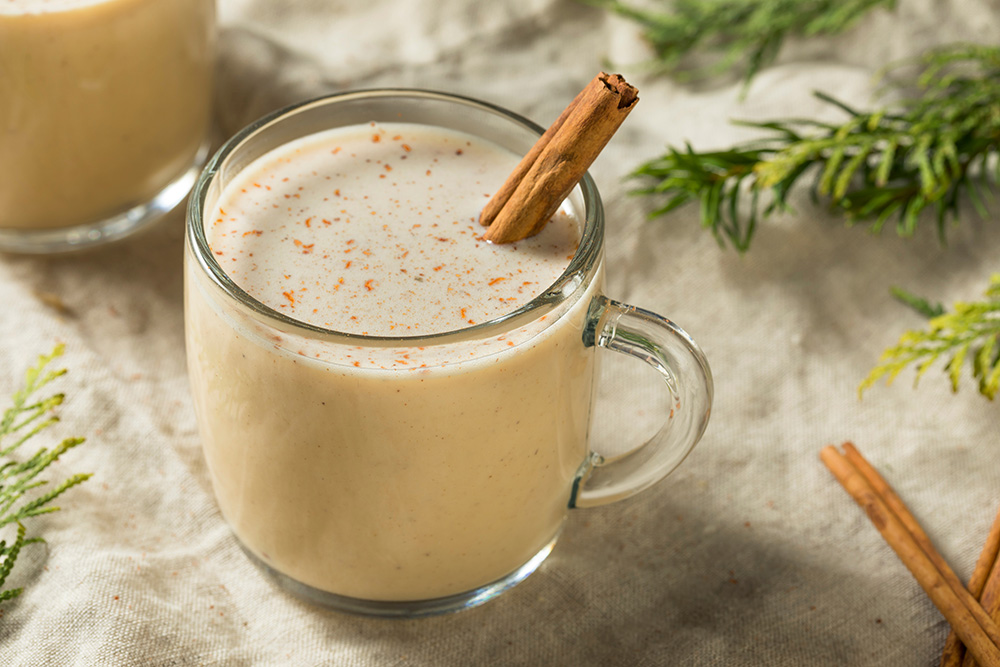
Spanish for “little coconut,” coquito is also referred to as Puerto Rican Eggnog due to its popularity on the island. As a tropical tradition, many of its ingredients — including coconut milk, coconut cream, and vanilla — aren’t exactly CT Grown.
However, you can still use yolks from locally sourced eggs and mix them with condensed milk (a product invented in Connecticut, incidentally) to make a thick base for this drink. Add in some rum from a Connecticut distillery as well!
Whiskeys and spirits
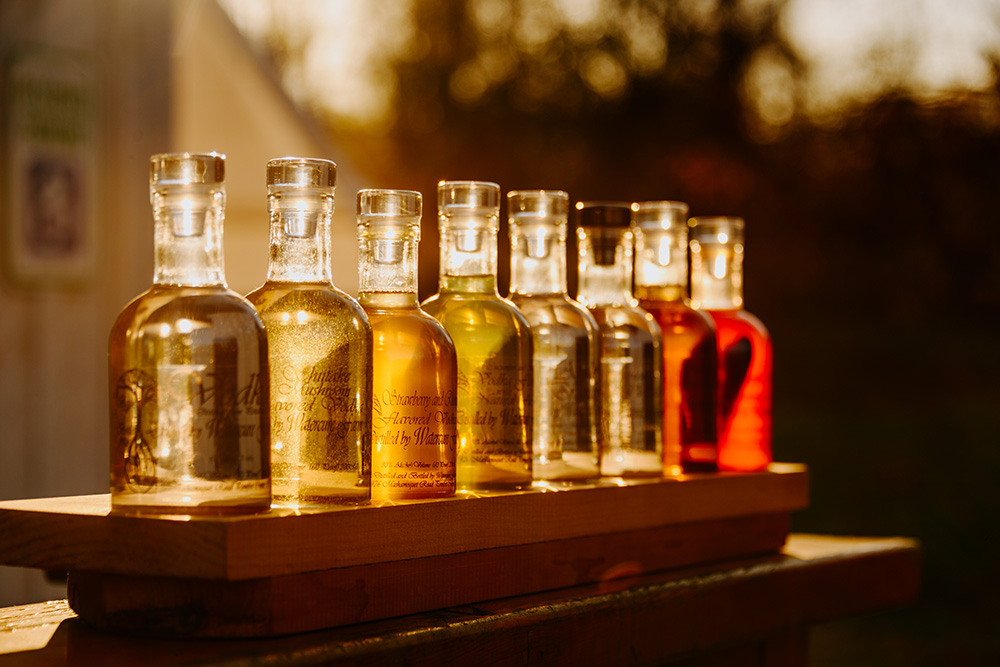
A growing number of distilleries in Connecticut are giving residents and visitors a local option when it comes to bourbon, gin, rum, vodka, whiskey, and other spirits. These distilleries frequently partner with local farms to infuse their product with flavors like fruit and herbs.
During the holiday season, you can relax with warming drinks like a hot toddy, hot buttered rum (using CT Grown butter, of course), spiked hot chocolate, or a nor’easter — a winter spin on the Moscow Mule that includes maple syrup in the mix.
Wine
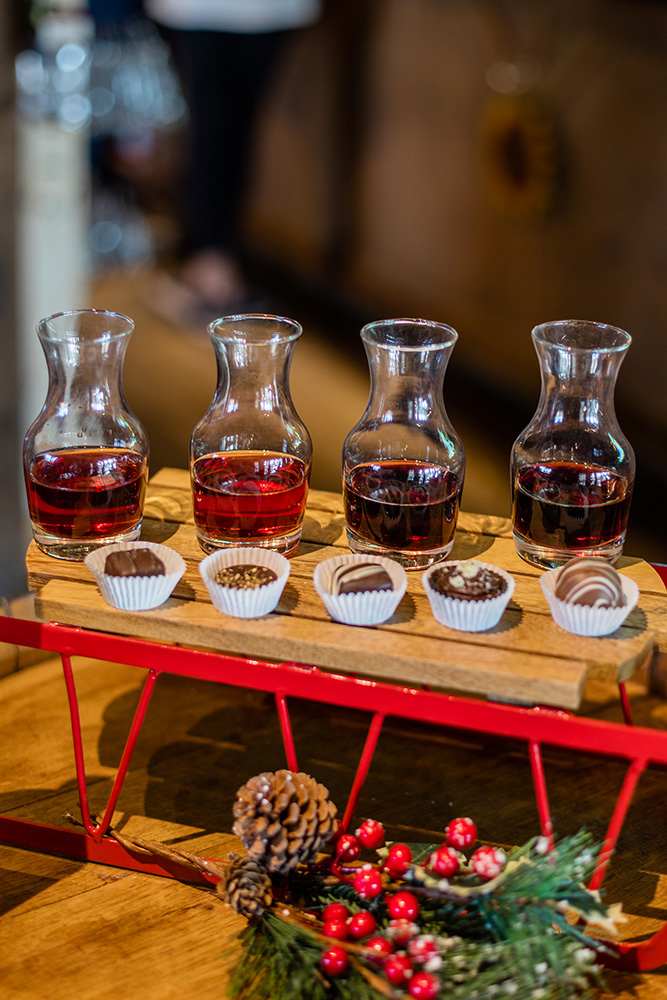
Some of Connecticut’s 45 farm wineries close their doors for the season when colder temperatures arrive, but many are happy to welcome guests throughout the year. Pull up a seat in the cozy tasting room to enjoy some delicious vintages, and pick up a bottle or two as a gift.
Connecticut farm wines also work well for mulling to create a delicious, warm beverage on a holiday evening. Mulled wine is prepared with ingredients like oranges, honey, and spices for a wonderful evening libation.
Wassail
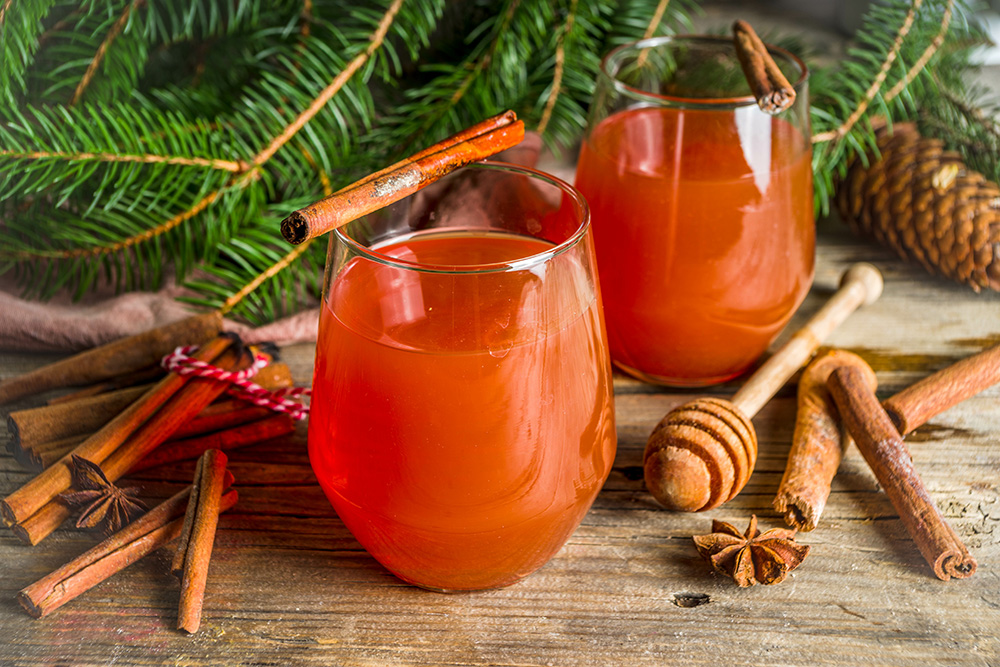
Yes, the drink from the Christmas song!
Traditionally held on Twelfth Night, wassailing involves a group of people visiting homes to sing festive tunes and wish the occupants good cheer. The homeowner rewards them with a small gift (a figgy pudding, perhaps) in exchange for the group’s blessings and a drink from the bowl of wassail they carried. In addition to the neighborhood strolls, wassailing ceremonies have also taken place in orchards to bless the trees before the next season.
Although caroling has largely replaced wassailing, the beverage remains a unique holiday offering — and one that can easily use CT Grown ingredients. Wassail is traditionally made with a base of cider, ale, or wine, which is then mulled with spices.
Beer
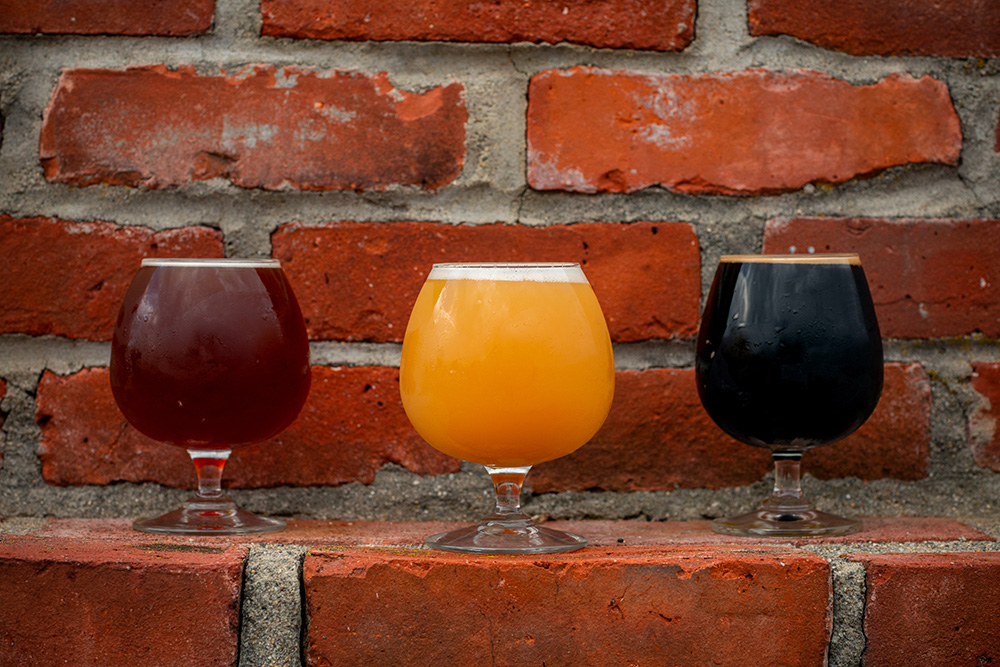
Connecticut’s craft breweries are in operation year-round. But once winter arrives and patrons abandon the beer garden for the toasty taproom, the preferred styles shift to heartier fare.
“Winter warmers” such as porters and stouts typically use darker malts, have a higher alcohol by volume (ABV), and are more filling. In addition, many breweries celebrate the season by creating holiday ales with ingredients like cinnamon, orange peel, and other flavors found in mulled drinks.
You may also find a greater availability of imperial beer options, which have stronger, heartier flavors that may be further enhanced through barrel aging. These beers also have a very high ABV, so be sure to drink responsibly.
Cider
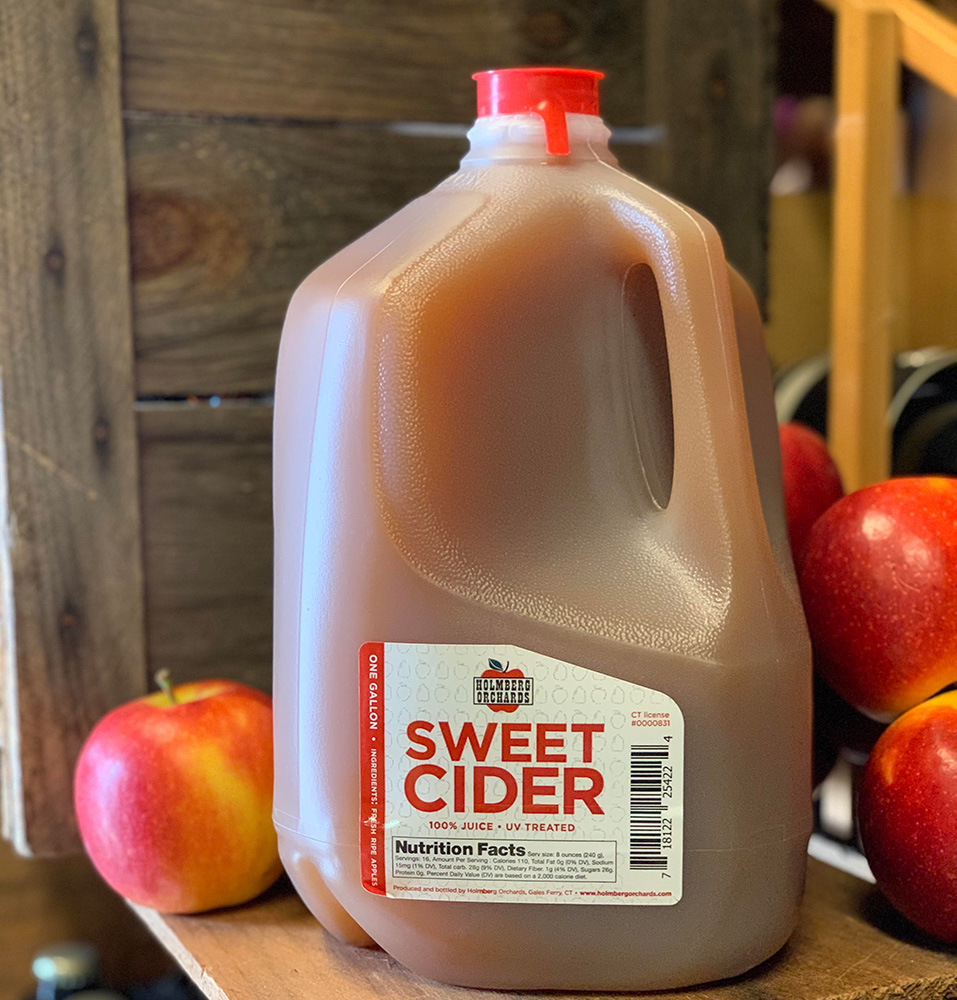
This autumn favorite is still available during the holidays, though this is also your last call for the delicious beverage. Apple cider is a dark, sweet beverage produced by compressing apple mash; since it lacks preservatives, it has a shorter shelf life and more seasonal availability compared to apple juice.
Warm up with apple cider on a cold evening by mulling it with honey, maple syrup, or spices. You can also look for some of the hard cider options offered by many orchards, which often have varieties pairing the alcoholic beverage with flavors like honey and ginger.
Milk for Santa
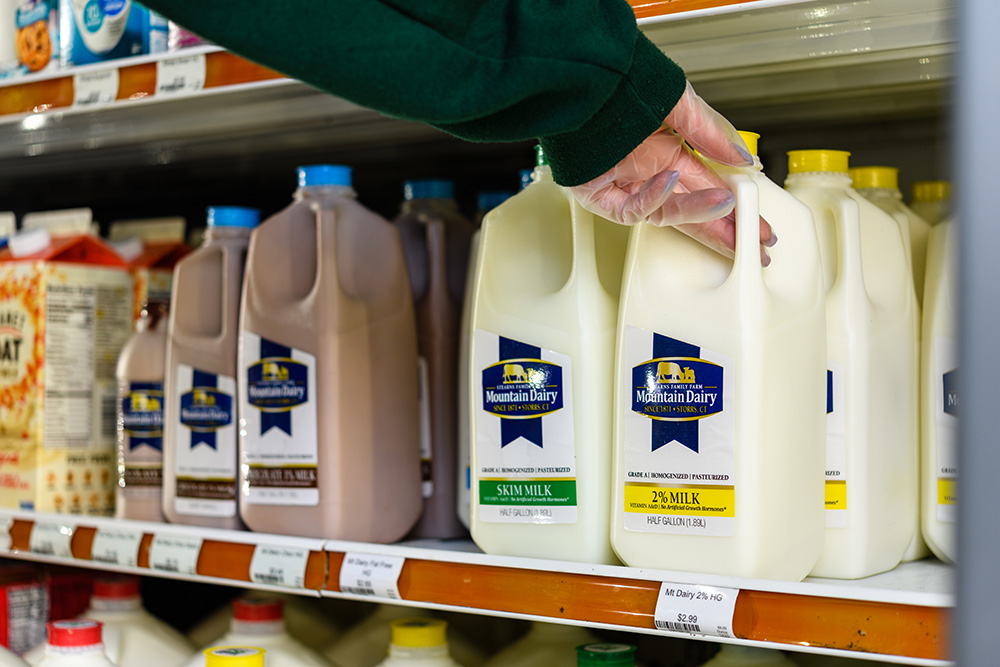
You can’t forget Saint Nick this time of year. Locally produced milk is available from 87 dairy farms in Connecticut, and leaving out a glass of milk for Santa ensures that he’ll get 13 essential nutrients with every serving.
No matter how you recognize the holiday season, feasting is a big part of the occasion. When families come together, the dinner table is the perfect place to celebrate with loved ones over a rich and hearty meal.
Holiday meal traditions go back generations, and fresh CT Grown ingredients can easily be used for many of the customary dishes served at holiday occasions. Here’s a look at why certain foods come to the table each year, with suggested recipes that can be made with a little help from your local farmers and producers.
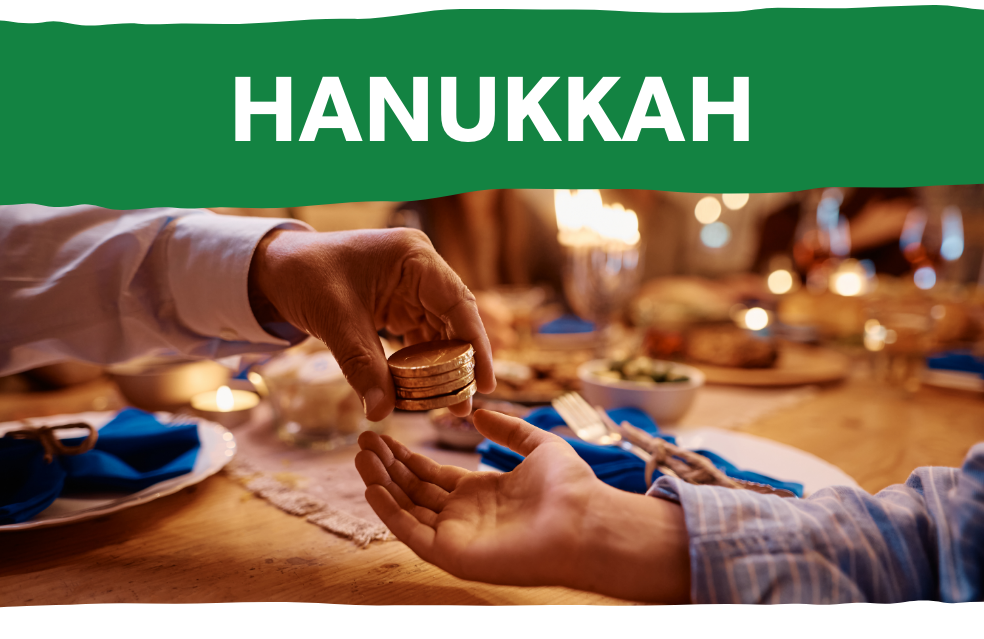
Many traditional Hanukkah dishes are fried in oil, commemorating the well-known miracle of the menorah burning for eight days even though there was only enough oil for one day. Latkes and sufganiyot are particularly popular during the holiday.
Latkes are commonly prepared with potatoes, but often incorporate cheese as well. This ingredient honors the story of the heroine Judith, who saved her people by feeding an Assyrian general salty cheese and wine, then decapitating him.
Sweet potatoes are readily available at Connecticut winter farmers’ markets and go great with the following latke recipe. You can also pick up some CT Grown jelly or jam for this delicious sufganiyot treat.
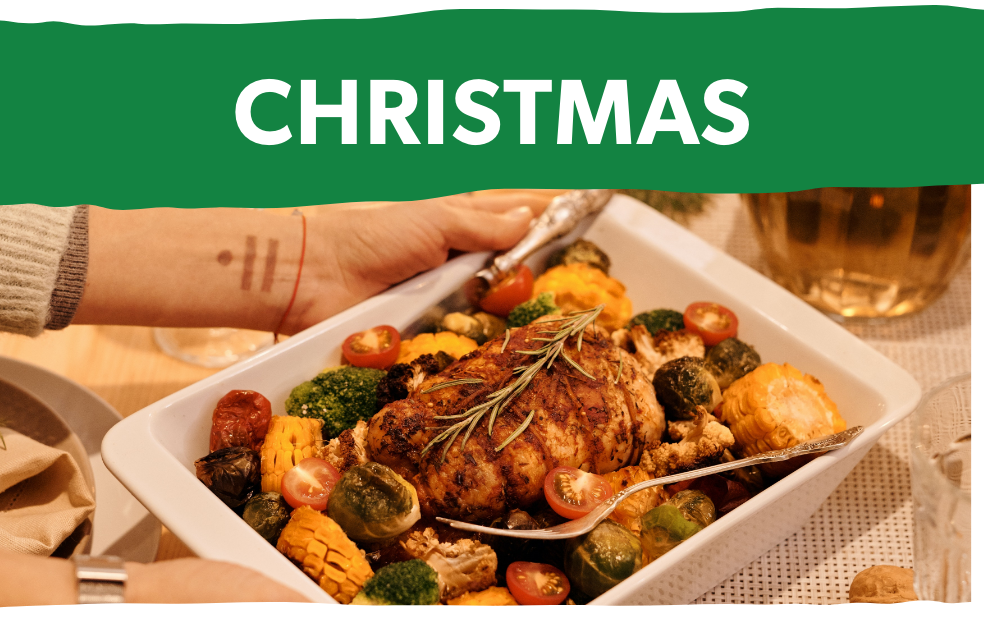
Christmas meal traditions vary widely from country to country. Common Christmastime dishes include tamales in Mexico, minced pies in Eastern Europe, and fish in Italy and Scandinavia.
Despite the melding of many cultures in the United States, the big feast on Christmas Eve or Christmas is still largely rooted in English tradition. British celebrations feature a hearty main dish such as a turkey or roast, and Brussels sprouts also became a popular choice due to their hardiness as a winter crop.
For a traditional twist that makes a statement, try the following recipes with CT Grown pork, Brussels sprouts, and maple syrup.

Kwanzaa’s name derives from a Swahili phrase for “first fruits of the harvest,” and the celebration is rooted in the harvest festivals of sub-Saharan Africa.
The holiday incorporates many food-related symbols, including mazao (for harvest crops, represented by fruits/vegetables), and muhindi (for fertility and the future offered by children, represented by one ear of corn for each child in the family). Meals also typically incorporate collard greens, a symbol of fortune, and black-eyed peas, a symbol of good luck.
For the traditional Karamu feast on December 31, try these hearty dishes that use CT Grown foods like winter squash, chicken, garlic, and peppers.
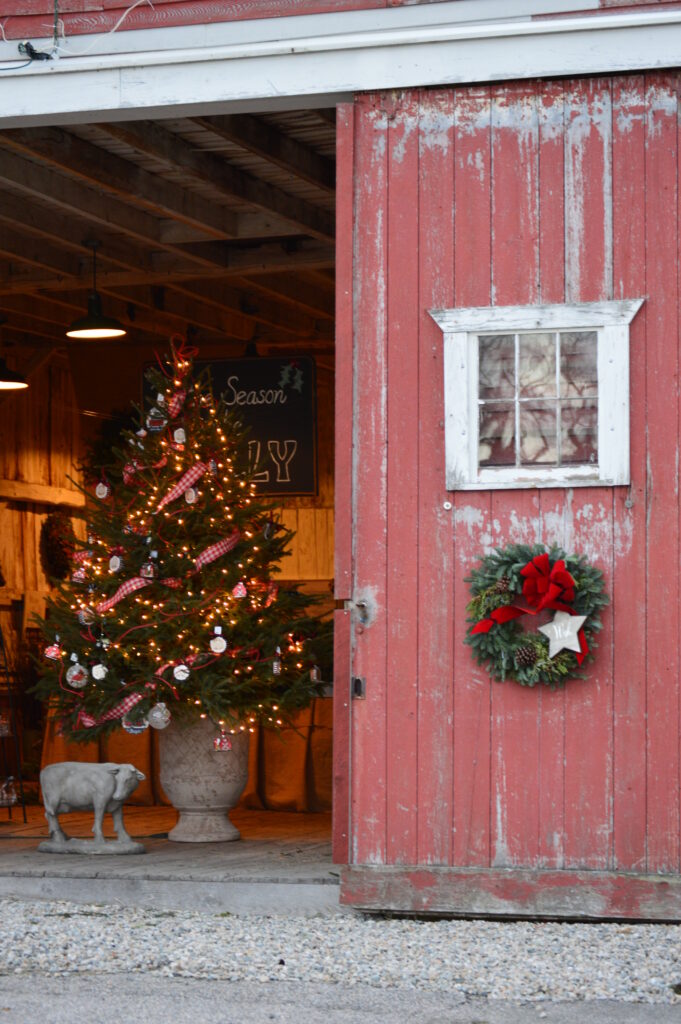
The holiday season brings an onrush of classic holiday films, ranging from It’s a Wonderful Life and Frosty the Snowman to more recent movies like National Lampoon’s Christmas Vacation and Elf. Every family has a few favorites they like to cozy up with in the leadup to Christmas.
The 1945 romantic comedy Christmas in Connecticut has also started to gain more attention, especially in its namesake state. This year, the Goodspeed Opera House debuted a musical based on the film, and the show runs through December 30th.
The story follows Elizabeth Lane (Barbara Stanwyck), a magazine writer whose column chronicles her idyllic life with her husband and child on a Connecticut farm. The only problem: Elizabeth actually lives alone in New York City. When an invitation to host a returning war hero on the farm threatens to expose the ruse, Elizabeth tries to fabricate her fictional life on a farm owned by a friend. Hilarity ensues!
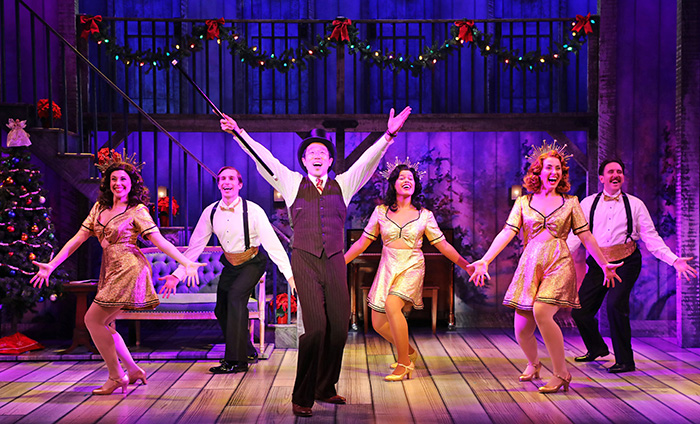
Christmas in Connecticut both showcases and lampoons the classic depictions of Christmas in a rural New England town, with scenes featuring horse-drawn sleigh rides and runaway cows. The film is also a surprising treasure trove for food lovers, as Elizabeth’s column is dedicated to farmhouse cooking.
In honor of the classic film and the new Goodspeed show, we’d like to share some dishes featured in Christmas in Connecticut and offer tips on how you can use CT Grown ingredients to prepare them.
Flapjacks
In both the film and musical, Elizabeth borrows her recipes from Felix Bassenak, a boisterous Hungarian chef and restaurant owner. Felix accompanies Elizabeth to the farm to aid in the deception and, in a memorable and amusing scene, tries to teach her how to make flapjacks (or, in his words, to “flip-flop the flop-flips”).
Flapjacks can be made with a few simple ingredients, including milk, eggs, butter, and maple syrup – all of which are produced in Connecticut year-round. Try the following recipes for a delicious Christmas breakfast!
Roast goose bernoise
Elizabeth’s lengthy Christmas menu is topped by the main course of roast goose bernoise with walnut dressing. Goose was once a popular tradition on Christmas and, while it has largely been replaced by other options such as turkey, some Connecticut farms continue to raise this bird.
“Bernoise” is likely referring to bearnaise sauce, a mouthwatering French topping made with butter and white wine. Visit Connecticut Wine Country to get the latter ingredient; use some for cooking, and serve the rest with dinner!
Candied sweet potatoes
Another pick from Elizabeth’s Christmas menu, candied sweet potatoes, are a delicious side dish for a holiday feast. This hardy vegetable stores well, and sweet potatoes harvested in the late autumn can still be found at a winter farmers’ market or grocery store. Pick up some Connecticut maple syrup to make that perfect glaze!
Potatoes au gratin
Felix’s restaurant serves up a robust line of courses, including potatoes au gratin. In Connecticut, potatoes are typically harvested through the end of the summer, but do so well as a storage crop that they are available year-round.
For a uniquely Connecticut spin on this recipe, try out the Lighthouse Inn potatoes. This dish was an iconic side at the New London inn, and is available once more after the inn reopened earlier this year.
Brussels sprouts a la Felix
Felix’s menu also includes “Brussels sprouts a la Felix”—again leaving to the imagination how this eccentric character may have prepared this side. Brussels sprouts have become a popular option for Christmas feasts due to their cold hardiness. Harvested here in October and November, Brussels sprouts do well in storage and are readily available throughout the winter.
In honor of Felix’s ancestry, we picked this Hungarian-style preparation:
Wishing you a delicious feast and a happy holiday!
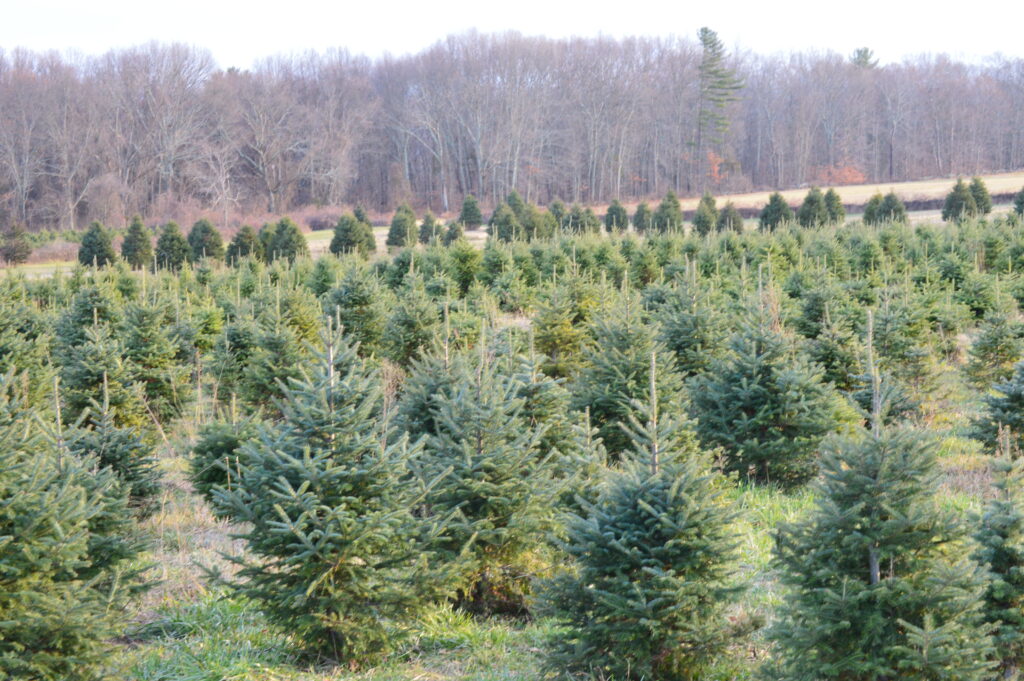
Christmas seems to arrive earlier each year. Store displays of yuletide decorations go up as soon as Halloween is over or sometimes even sooner.
While these Christmas displays may seem premature, this year they offer a helpful reminder to make plans to visit a CT Grown Christmas tree farm. Many farms have opened earlier than usual in anticipation of another year of strong demand for real Christmas trees.
The COVID-19 pandemic drove a spike of visitors to Christmas tree farms in 2020 and 2021, as people were more determined to create an enjoyable holiday experience at their home. Christmas tree farmers never could have anticipated this surge in demand, since growing a Christmas tree is a lengthy process; it takes five to 10 years for a seedling to reach maturity.
Farmers have to be cautious about how many Christmas trees are cut, since cutting too many immature trees in one season can have a ripple effect for years to come. Last year, some farms took steps such as shutting down early or restricting their cut-your-own options in order to prevent overharvesting. CT Grown farms expect a stronger inventory this year, but those who visit early will have more to choose from.
“We have plenty of beautiful trees and with more than 400 tree farms located throughout Connecticut, consumers will be able to find the perfect tree – folks should check the website or call ahead to check on availability,” said Commissioner Bryan P. Hurlburt of the Connecticut Department of Agriculture. “We encourage people to learn more about the varieties available, pick up a wreath, poinsettia, or other seasonal product to help decorate your home, and enjoy the special holiday celebrations going on at CT Grown Christmas tree farms.”
Can I pick out a tree now and cut it later?
Buying a Christmas tree requires careful timing; some farms allow tagging to choose a tree early and cut it later. Tagging enables you to visit the farm, select your tree, and place a tag on it. This tag lets farm staff and other visitors know that the tree has been reserved and should not be harvested.
Check with the farm ahead of time to see if they allow tagging, since some farms only allow same-day harvesting.
What you’ll find at a CT Grown Christmas tree farm
Cut-your-own farms invite you to stroll through the stands of trees and find the perfect specimen for your home. They usually provide you with a saw to fell the tree and sleds or carts to tote it out of the fields for purchase. Farms also have special equipment to shake off loose needles and wrap up the tree, and staffers are often willing to help you secure the tree to your vehicle.
Farms may also sell a variety of other seasonal items, such as wreaths and poinsettias, as well as tree accessories like stands, garlands, and even commemorative ornaments.
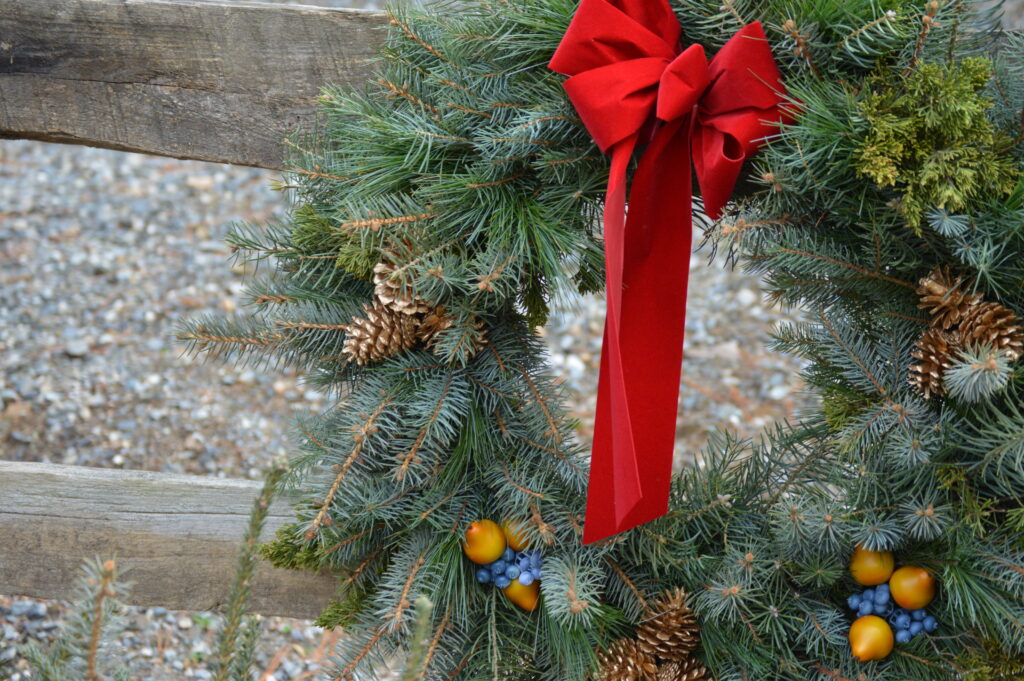
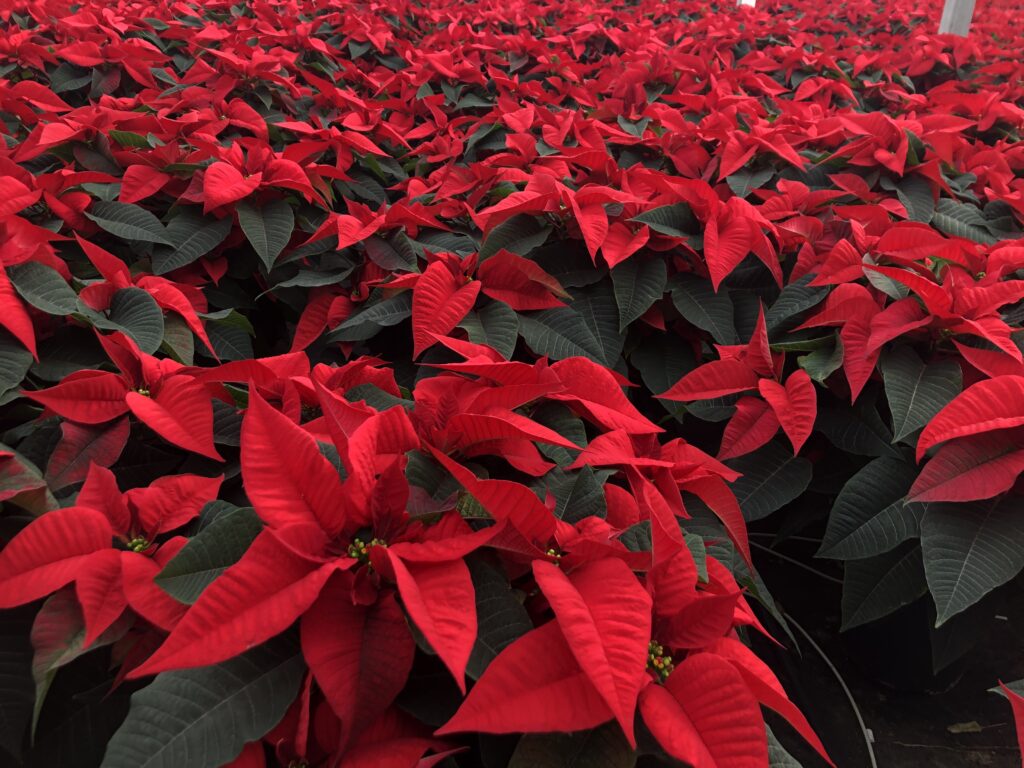
Christmas tree farms don’t just want to sell you a product; they work to create a memorable and enjoyable experience your family will want to revisit year after year. On any given weekend, you might discover that the farm is offering hay rides, hosting food trucks, providing family photo sessions, serving seasonal refreshments like hot cocoa and sugar cookies, or bringing in Santa Claus for a visit.
CT Grown Christmas tree varieties
There are several varieties of Christmas tree that grow in Connecticut. This guide can help you decide which type will best suit your needs:
- Balsam Fir: A dark green tree with long-lasting needles and a distinct fragrance
- Blue Spruce: Distinguished by sharp needles, which necessitate careful handling but can be useful if you need to keep pets at bay; has strong branches and good needle retention, but is not very aromatic
- Canaan Fir: Has similar characteristics to balsam and Fraser firs, with good needle retention
- Concolor Fir: Known for its longer needles, good needle retention, and strong scent
- Douglas Fir: One of most popular Christmas tree options, with a dark green hue, dense branches, soft needles, and a lovely fragrance; its branches are less robust than other options, making them better suited for light ornaments
- Fraser Fir: Features a blue-green appearance, strong branches, good needle retention, and a pleasant aroma
- Norway Spruce: Dark green and well-shaped, but with poorer needle retention
- White Pine: A good choice for those in need of a taller tree, with soft needles and good needle retention; drawbacks include minimal scent and weaker branches
- White Spruce: Well-shaped with a bluish green color; needle retention isn’t as strong, but is better than other spruce options
Tips for tree selection and care
Before you head to a CT Grown Christmas tree farm, measure the height of the room where you’ll place the tree and the width of the doors you’ll use to get the tree inside. Bring along a measuring tape to make sure the tree you pick won’t be too large.
Contrary to what Clark Griswold says, you don’t have to be frozen from the waist down as part of the experience. Dress in warm, comfortable clothes that you’re willing to get dirty, and wear sturdy footwear. Check ahead to see if you need to bring your own saw, and it’s a good idea to bring your own rope or tie-downs to secure the tree for the trip home.
Look for a healthy tree that doesn’t have too many brown or shedding needles. Don’t discount a tree just because it has a flaw or two, such as an area with thinner branches. If you’ll be placing the tree against a wall or in a corner, you can easily conceal a portion of the tree that is less visually appealing.
Once home, be sure to water your tree regularly to prevent the tree from drying out, which will cause the needles to shed faster and create a potential fire risk. Never let the water line drop below the bottom of the trunk, since doing so will allow resin to seal off further water uptake. Check the water level each day, or get an automatic tree waterer to assist with this task.
What should I do with the tree after the holiday?
Many towns and cities schedule a day or two for curbside pickup of Christmas trees, or designate a site where trees can be picked up. These trees are then used for compost, mulch, or sand dune stabilization projects to benefit local parks and beaches.
You can also place your tree in the yard as a sanctuary for birds. Decorate it again with simple bird feeders made from pine cones, peanut butter, and birdseed to attract more feathered friends to your home.
Christmas trees are also sought after by farms. Goats, alpacas, chickens, and other animals enjoy browsing through the branches as an appetizer or enrichment activity as they seek other treats hidden between the boughs.
Check in with your local farm to see if they are accepting trees following the holiday. Just be sure to remove all ornaments and decorations, and don’t ever give them to animals without permission.